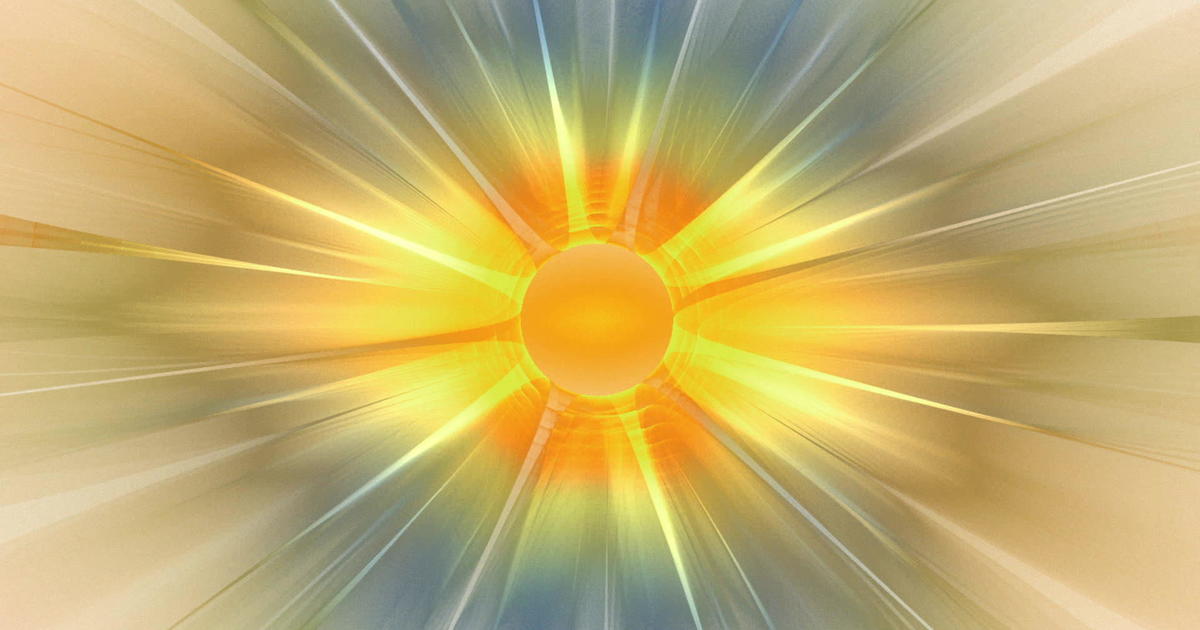Nature up close: Sierra Nevada, Death Valley and the rain shadow effect
By “Sunday Morning” contributing videographer Judy Lehmberg.
The beautiful Sierra Nevada’s name translates very literally from Spanish as “mountain snowfall,” meaning snow-covered mountains. The reason why the peaks are snow-covered and why hot, dry Death Valley is east of the Sierra Nevada range is the same: They are both the result of the rain shadow effect.
To understand how this terrain-induced meteorological effect causes precipitation to occur in one place and dry, hot deserts in another, a little knowledge of relative humidity is needed.
The Earth’s atmosphere contains water molecules in the gaseous state, and these create pressure; the more water molecules, the greater the pressure. The higher the temperature, the greater maximum amount of water the air can hold, and therefore higher vapor pressure.
The relative humidity is defined as the ratio of vapor pressure present divided by the maximum vapor pressure at that temperature. When the weather reporter says the relative humidity is a muggy 75%, this means the water vapor pressure in the air is 3/4 of the maximum possible at that temperature.
Dew, rain and snow often are stripped from moist air when the dew point is reached. For example, suppose the air temperature is T1, and the vapor pressure is about 2/3 of the maximum vapor pressure at that temperature; if the air is cooled, then at some lower temperature (T2), the vapor pressure of water in that air would be maximum, and dew, rain or snow may form.
As warm moist air is deflected upwards by mountain ranges, the air cools, its capacity to hold water decreases, the saturation point is reached, and water begins to be stripped from the air as dew, rain or snow on the windward side of the mountain. After passing the top of the mountain, this cold, dry air begins to descend. As it descends, it warms. The relative humidity drops to a low number and the air acts like a giant hair dryer on the leeward side of the mountain. Death Valley lies on the leeward side of the Sierra Nevada range. It is hot and dry because the moisture from the Pacific is pulled out of the air as snow on top of the Sierra Nevada mountain range. Death Valley is in the rain shadow of the Sierra Nevada range.
The Sierra Nevada range is part of the American Cordillera, the series of mountain ranges that largely blocks Pacific moisture-laden air from reaching areas to the east of these mountains. The Rocky Mountains in western Montana and Alberta add to these blockages. Very unusual weather conditions, in addition to the rain shadow effect, can arise because of these mountain ranges.
One is a Chinook. When a strong Pacific front hits the mountains and moisture is extracted, the descending cold dry air can heat up rapidly on the leeward mountain side -- one degree Celsius for every 100 meters drop in altitude. This can result in a high-velocity Chinook wind, commonly called a “snow eater” wind, and can change the temperature in a few hours from below zero to 60°F.
Snow-capped mountains act as giant reservoirs of water, and as spring air warms the mountains, snowmelt recharges the surrounding streams and aquifers. The snow water equivalent (SWE) for the Sierra Nevada mountains averages 20 cubic kilometers of water, ranging from 4.0 to 40.6 km3. This supplies more than 60% of California’s water to 25 million people and three million acres of farmland.
Judy Lehmberg is a former college biology teacher who now shoots nature videos.
For more info:
- Judy Lehmberg (Official site)
- Judy Lehmberg’s YouTube Channel
To watch extended “Sunday Morning” Nature videos click here!




